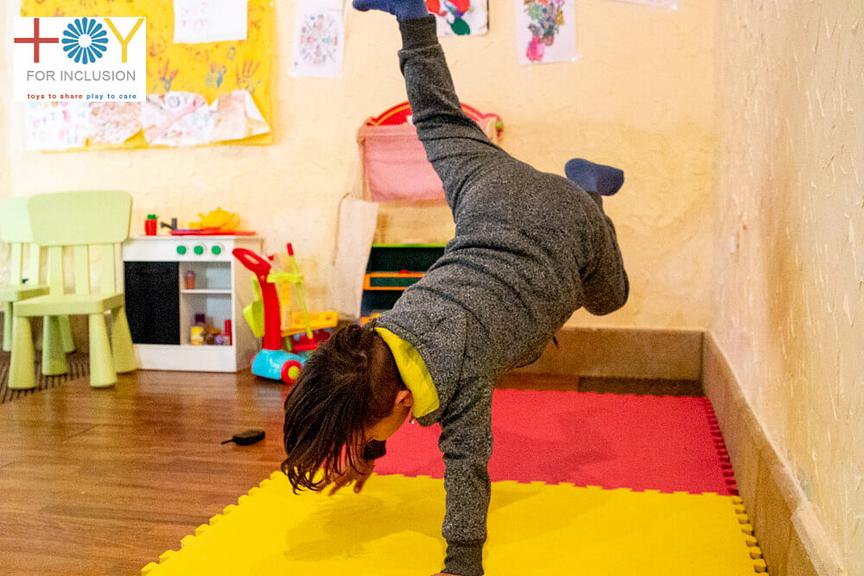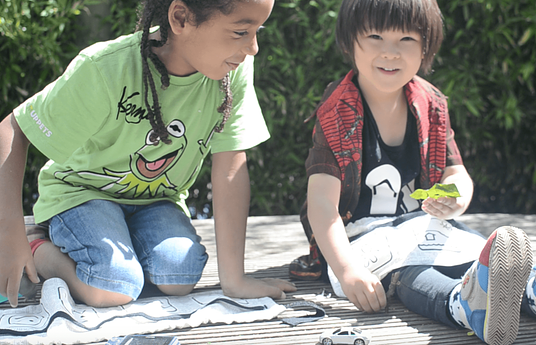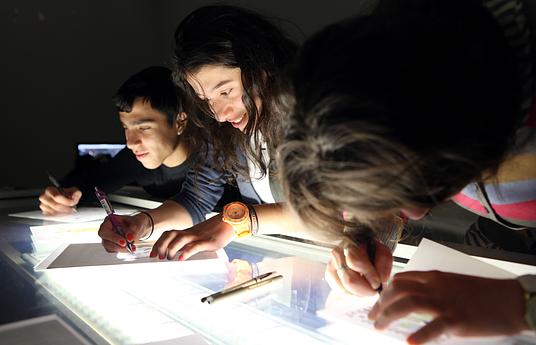What we do?
TOY for inclusion aims to improve the transition experience of vulnerable children, and especially those with a Roma, minority or migrant background, to schools. It does so by creating community based Early Childhood Education and Care (ECEC) Play Hubs, where relationships between young children and families from different backgrounds are built. They are located in areas that are reachable for all families, and are designed and run by multi-sectoral teams composed by representatives of communities, school and preschool teachers, health services, parents and local authorities (Local Action Team).
The TOY for Inclusion Play Hubs organize play-based activities designed to help children develop necessary skills and knowledge for formal education. The Local Action Teams, responsible for each Play Hub, mobilize local communities around young children. Activities can take place in the Hubs but also in other settings in the communities, such as community centers, libraries, parks, squares, preschools, health centers.
The Play Hubs also function as parenting support hub where parents and grandparents can visit with their young children/grandchildren to borrow toys and books, and at the same time learn about how play supports children’s learning development and access information about other child and family-focused services and events in the community. Play Hubs are aimed to serve as centers for the community and reach beyond education and care, primarily by offering space for activities dealing with health, nutrition, etc.
Why we do it?
High quality Early Childhood Education and Care (ECEC) is an essential foundation for all children’s successful lifelong learning, social integration, and later employability. Disparities in access to quality education and increasing segregation in schools start at a young age. By creating inclusive non formal ECEC services and by supporting practitioners from different sectora to work collaboratively, TOY for Inclusion becomes the gatway to education and care for many disadvantaged children and families in Europe.
Results
So far, 15 Play Hubs have been opened in 7 EU countries. Between 2018 and 2019, 6400 children, 3800 adults and 600 practitioners participated in the activities in the Play Hubs. Approximately 30% of the children, adults and practitioners came from vulnerable groups: migrants, refugees, Roma, low income or special needs.
Results:
• Increased access of vulnerable children (0-6) to inclusive and quality ECEC settings and improved transition experience to school
• Increased knowledge and skills of practitioners and local policy makers to work together with and for all children and families
• TOY for Inclusion approach embedded in local educational policies.
• Improved parental skills and increasing trust of vulnerable communities in the local services
• Increased trust between families of different cultural and ethnic background.
ww.toy4inclusion.eu
This project is co-funded by the European Commission and the Open Society Foundations.
TOY for Inclusion is the result of the cooperation between International Child Development Initiatives – ICDI (NL), International Step-by-Step Association – ISSA (NL), six members of the Romani Early Years Network – REYN: Educational Research Institute - ERI (Slovenia), Open Academy Step by Step – OASS (Croatia), Associazione 21 luglio (Italy), Centre for Education Initiatives – CEI (Latvia), Wide Open School – WOS (Slovakia), and Partners Hungary, as well as the Centre for Early Childhood Research at the Dublin City University Institute of Education (Ireland), the Federation of Mediterranean Roma Associations - Akromfed, Turkey and Salvation Army Netherlands.



